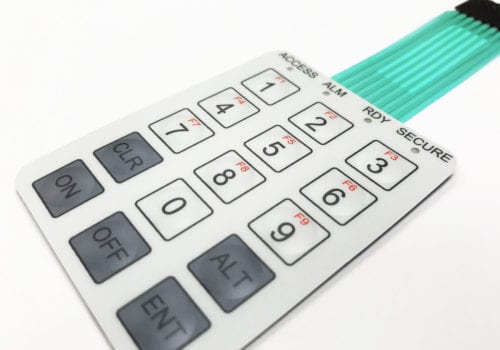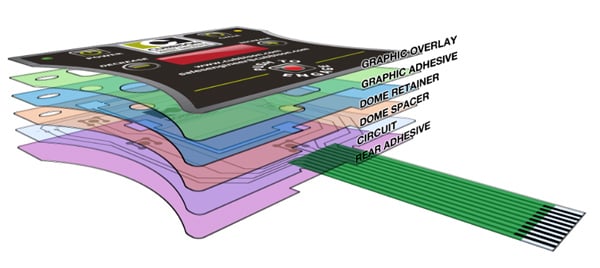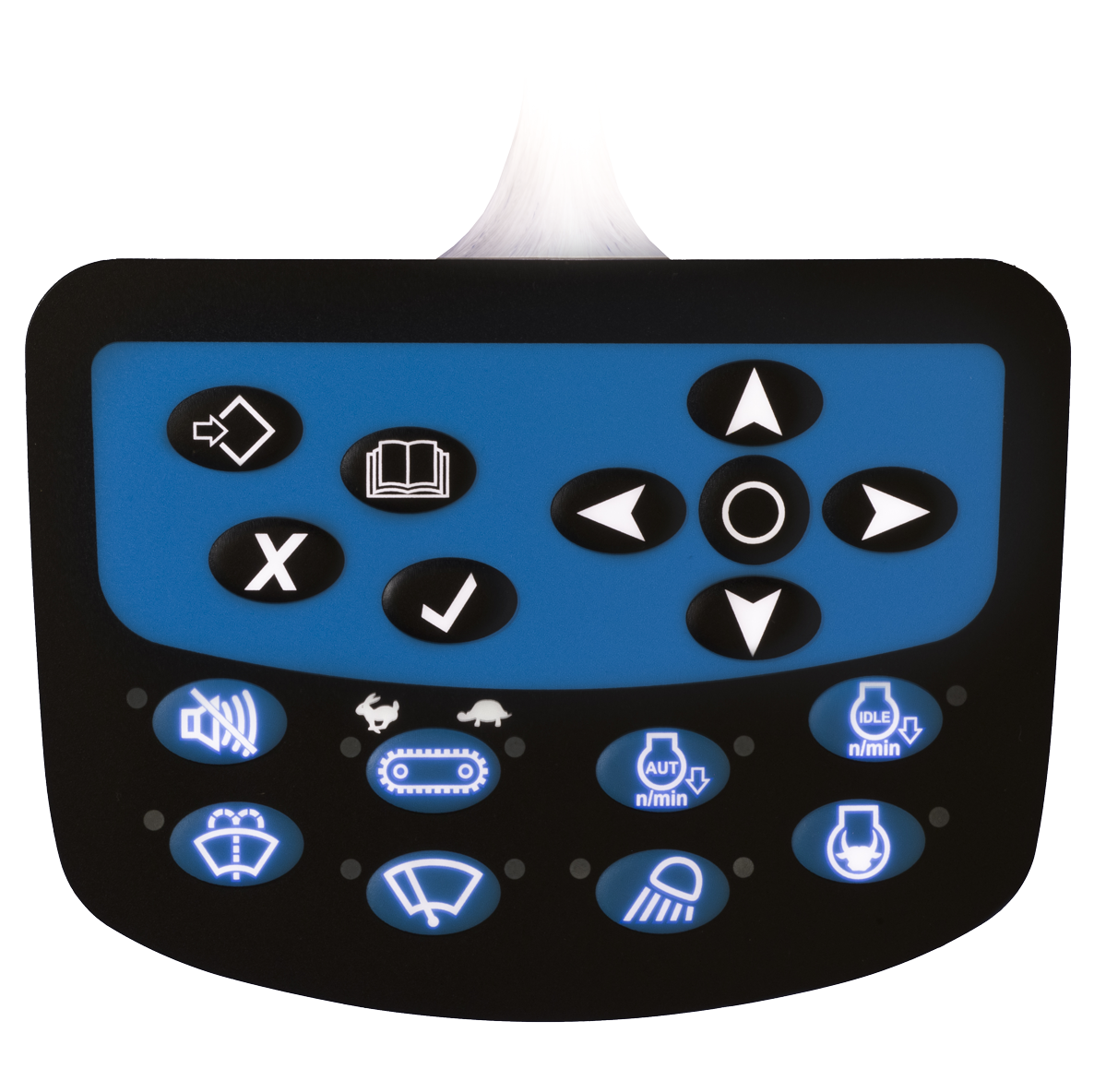Why Membrane Layer Switches Over Are Vital for Long Lasting Control Equipment
Membrane layer buttons play a critical role in making certain the durability and reliability of control systems across various industries. As we check out the complex advantages of membrane layer buttons, it becomes evident that their significance transcends simple functionality, influencing individual experience and functional effectiveness.
Overview of Membrane Switches
Membrane layer buttons are functional and trusted parts typically utilized in numerous electronic control systems. The visuals overlay supplies both functional and visual style, while the spacer layer guarantees that the buttons are triggered just when pushed.
Membrane buttons are frequently favored in applications requiring a small and light-weight layout, making them perfect for portable devices, medical tools, and industrial equipment. They can be customized to fulfill particular customer requirements and can integrate different features such as backlighting, tactile feedback, and several shades. Furthermore, membrane buttons are immune to dirt, dampness, and contaminants, making them appropriate for settings where toughness is necessary.
Advantages of Longevity
In many applications, the sturdiness of membrane layer switches over deals substantial benefits that improve their total efficiency and dependability. These switches are developed to endure severe atmospheres, making them optimal for use popular problems such as high humidity, severe temperatures, and direct exposure to chemicals. Their robust building aids to avoid damages from physical effect, making sure resilient capability and lessening the demand for constant substitutes.
Additionally, membrane layer switches are resistant to deterioration, which is critical in applications where regular communication takes place. This durability converts to reduce maintenance costs, as organizations gain from lowered downtime and fewer solution interruptions. The encapsulated design of membrane changes shields inner parts from dust and dampness access, additional adding to their life expectancy (membrane switch).
Another advantage is their capability to maintain regular performance with time. With a high tolerance for mechanical tension, these switches maintain their tactile responses and electrical stability, guaranteeing customer complete satisfaction. Inevitably, the resilience of membrane switches not only enhances functional efficiency but also promotes self-confidence in their reliability, making them a favored choice for control systems throughout numerous markets.
Applications in Different Industries
Long lasting control systems employing membrane layer switches locate considerable applications throughout a variety of markets, each taking advantage of the unique features these switches supply. In the medical sector, membrane layer switches are critical for devices such as patient monitors and analysis devices, where integrity and simplicity of cleaning are vital. Their resistance to dampness and pollutants ensures they preserve functionality in sterilized atmospheres.
The automobile sector leverages membrane layer buttons for control panel controls and infotainment systems, their explanation where they supply streamlined, inconspicuous user interfaces that improve user experience. These buttons are likewise created to endure extreme problems, including direct exposure to extreme temperatures and vibrations.
In industrial setups, membrane buttons are generally used in machinery control board, offering tactile responses and durability necessary for high-usage applications. Their capacity to withstand chemicals makes them appropriate for manufacturing environments Website where spills and contaminants are constant.

Consumer electronics, such as kitchen area devices and push-button controls, likewise use membrane layer switches for their adaptability and cost-effectiveness. Generally, the versatility and durable nature of membrane changes make them indispensable across different markets, guaranteeing efficient procedure and long life in control systems.
Layout and Aesthetic Appeal
While capability is extremely important, the layout and aesthetic appeal of control systems geared up with membrane switches play a vital role in individual involvement and overall experience (membrane switch). The visual design of these buttons can dramatically affect user understanding and interaction. A well-designed membrane layer button improves the attractiveness of the device, making it more appealing to individuals and promoting a link in between the individual and the product
Membrane layer changes provide a large amount of flexibility in style, allowing makers to tailor graphics, colors, and appearances to line up with brand name identity and product visual appeals. Making use of vibrant shades and distinct patterns can draw focus, while tactile feedback can strengthen the customer's interaction with the gadget. In addition, the ability to integrate LED indications and backlighting into the membrane layer switch layout offers both functional and visual advantages, improving visibility and use in numerous atmospheres.

Enhancing Customer Experience

Additionally, membrane layer switches can be customized to integrate visual interfaces, boosting usability by offering details in a clear and user-friendly manner (membrane switch). This customization can consist of icons, tags, and color coding that overview customers through complicated performances with convenience. Additionally, their versatility enables assimilation in numerous atmospheres, ensuring regular performance whether in commercial equipment or consumer electronics
The resilience of membrane switches additionally plays a crucial role Check This Out in user experience. By standing up to rough problems and extended use, these buttons lower the likelihood of system failings, thus advertising reliability and user confidence. Eventually, the critical use of membrane layer switches over not only boosts functionality but likewise significantly enhances user interaction with control systems, making them an essential component in contemporary design.
Conclusion
